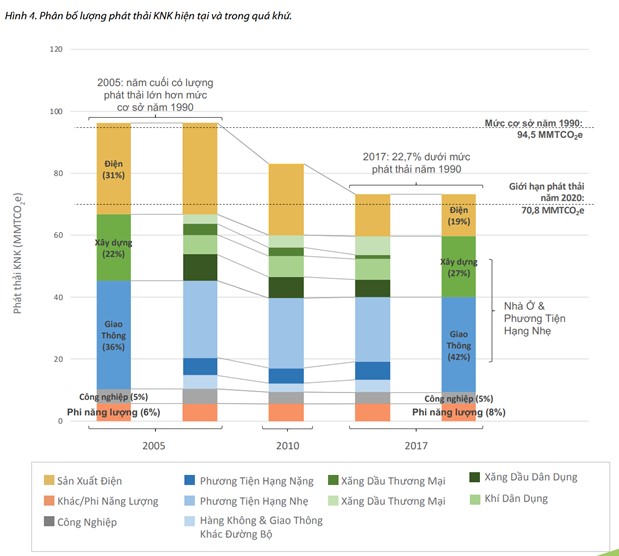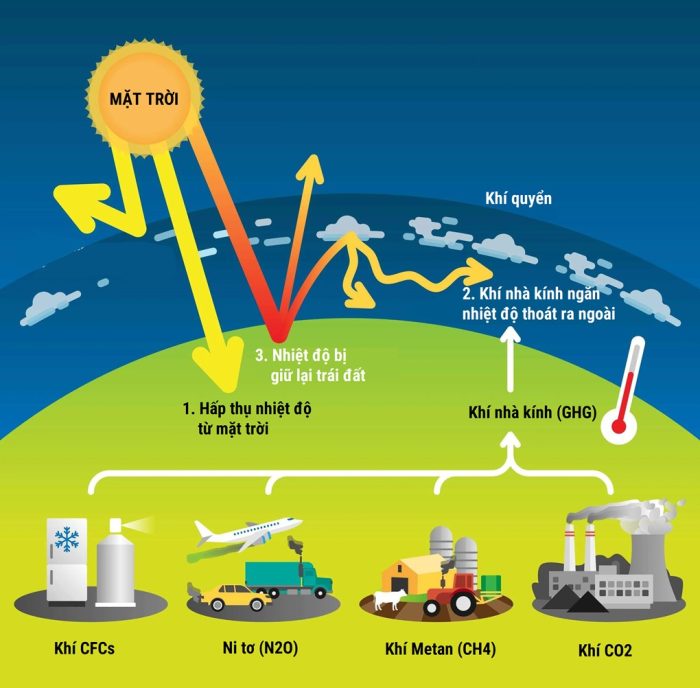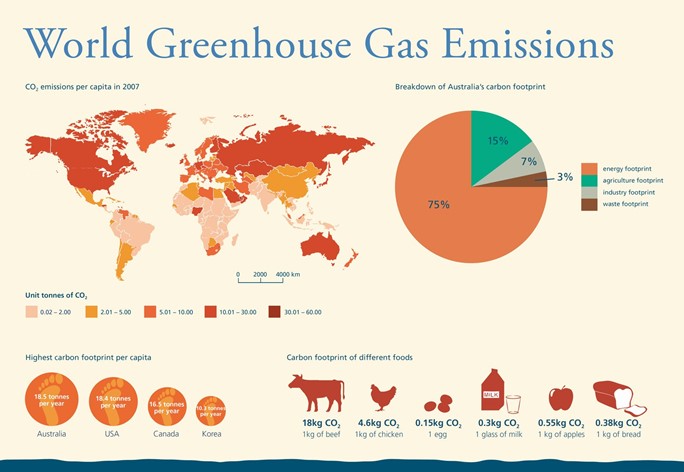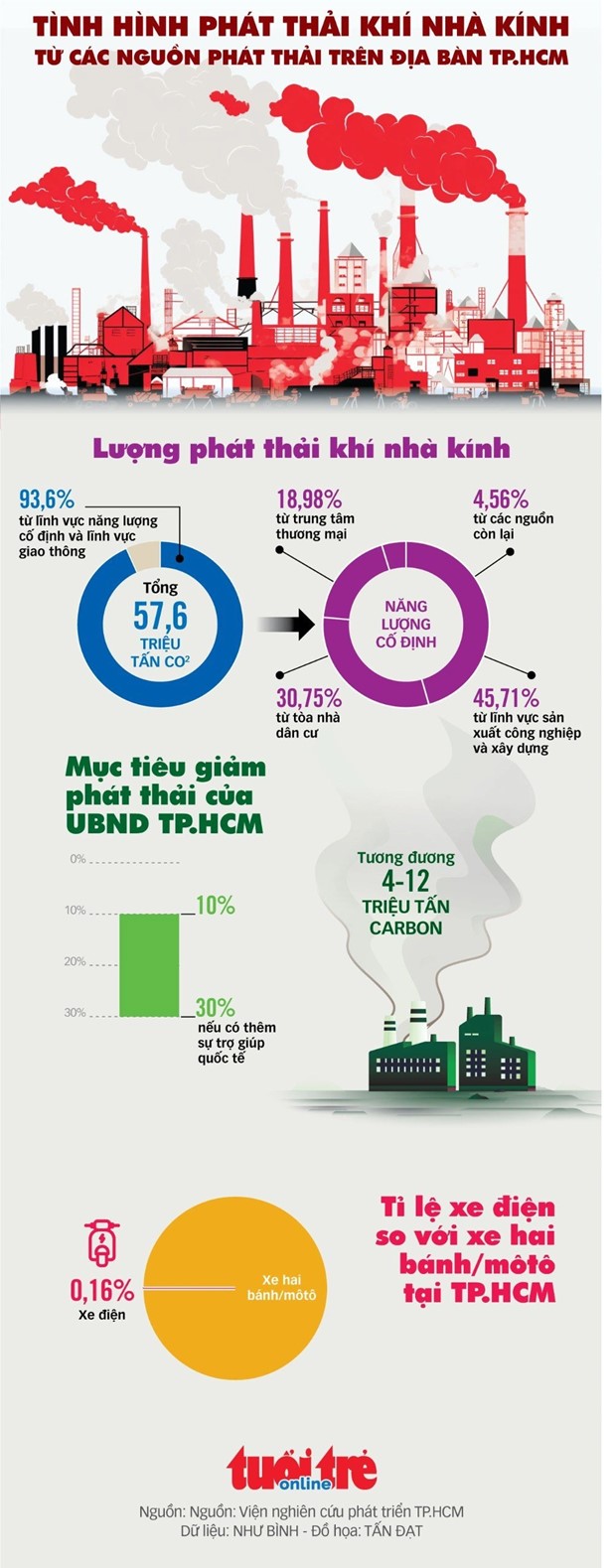What are Greenhouse Gases (GHG)?
1. What are Greenhouse Gases (GHG)?
Greenhouse gases are atmospheric gases that intercept long-wave (mainly infrared) radiation emitted from the Earth’s surface, then re-radiate in all directions including back to Earth, causing the greenhouse effect. Major greenhouse gases include water vapor (H2O), carbon dioxide (CO2), methane (CH4), nitrous oxide (N2O), trioxygen (O3) and chlorofluorocarbons (CFCs).
Source of greenhouse gas emissions by economic sectors
Widely reported by scientific research as the most important man-made greenhouse gas, CO2 is estimated to exist in the atmosphere for more than 300 years, and thus accounts for the greatest portion of the warming of the Earth.
Estimated persistence time of greenhouse gases in the atmosphere
Global greenhouse gas reduction in the 2005 – 2017 period
2. Why do greenhouse gases cause global warming?
Greenhouse gases stay in the atmosphere for hundreds of years. They act as a barrier, trapping the heat that radiates from the Earth’s surface and prevent it from escaping into space. The heat kept under the atmosphere makes the Earth’s temperature warmer.
Mechanism of the greenhouse gas effect
3. Global greenhouse gas emissions
China, the US and India are the three largest greenhouse gas emitters in the world, according to the Rhodium Group’s report. Per capita emissions are calculated as the total emissions divided by population.
According to the Australian Museum (2023), Australia, the US and Canada have the highest per capita emissions while in this figure, Vietnam lies at the world average (2.0 – 5.0 tons of CO2 per capita).
Greenhouse gases per capita of countries around the world
4. Greenhouse gas emissions in Ho Chi Minh city
Reports from Ho Chi Minh City Institute for Development Studies and Tuoi Tre newspaper (2023) showed that, Ho Chi Minh City generated 50 million tons of CO2, in which nearly one half (45%) came from the industrial production sector, and 30% from residential buildings. The proportion of electric vehicles accounts for only 0.16% of the total number of gasolien/diesel two-wheeled vehicles/motorcycles.
5. Which businesses need to prepare a greenhouse gas inventory report?
Vietnam’s Ministry of Natural Resources and Environment drafts an updated list of establishments that are required to carry out greenhouse gas inventories
This draft list includes 2,893 establishments, an increase of 981 establishments compared to the current list. Of these, the industry and trade sector accounts for the largest proportion with 2,261 establishments, followed by the transportation sector (81 establishments), construction (140 establishments), natural resources and environment (70 establishments), and agriculture and rural development (341 establishments).
- The industry and trade sector has 599 newly added facilities, including power plants and industrial establishments, with a total annual energy consumption of 1,000 TOE (tons of oil equivalent) or more.
- The transportation industry has 11 newly added facilities, including freight transport companies, with total annual energy consumption of 1,000 TOE or more.
- The construction industry has 36 newly added facilities, including cement manufacturing companies and commercial buildings, with a total annual energy consumption of 1,000 TOE or more.
- The natural resources and environment sector has 6 facilities eliminated, including solid waste treatment facilities, with an annual operating capacity of 65,000 tons or more.
- The agriculture and rural development sector has 341 newly added establishments, including livestock facilities, with an estimated total annual greenhouse gas emissions of 3,000 tons of CO2 equivalent or more.
The addition of new facilities to the list of establishments that are required to carry out greenhouse gas inventories serves as a step towards the goal of managing greenhouse gas emissions of the entire economy, aiding in the efforts to hit emission reduction targets under the Nationally Determined Contribution (NDC) by 2030.
Some points to note:
- The list of establishments that are required to conduct greenhouse gas inventories is updated every 2 years.
- Facilities in this list are responsible for preparing greenhouse gas inventories according to the provisions of law.
- The greenhouse gas inventory is the basis for establishments to develop the greenhouse gas emissions reduction plan, putting joint efforts in coping with climate change.
6. When is a greenhouse gas inventory report needed?
6.1. For facilities that generate greenhouse gases
The Law on Environmental Protection 2020 specifically stipulates the responsibilities of greenhouse gas-emitting establishments named on the list of establishments that are required to carry out greenhouse gas inventories, which includes:
- Responsibility for conducting greenhouse gas inventory, developing and maintaining a greenhouse gas emissions database system. Establishments that generate carbon footprint must produce greenhouse gas inventory every two years and send the inventory results to the Ministry of Natural Resources and Environment before December 1 of the reporting period.
- Responsibility for developing and implementing annual greenhouse gas emission reduction plans. Establishments that emit greenhouse gases must prepare an annual greenhouse gas emissions mitigation plan and strictly implement it. Greenhouse gas emission mitigation plans must be integrated with quality management, lower emission production, and environmental protection programs of the facilities.
- Responsibility for reporting greenhouse gas emission reductions. Establishments that produce greenhouse gases must prepare annual greenhouse gas emission reduction reports according to the measurement, reporting, and appraisal system and send them to the Ministry of Natural Resources and Environment and relevant agencies before December 31 of the reporting period.
6.2. For public companies
Circular No. 96/2020/TT-BTC on instructions for disclosing information on the securities market, effective from February 1, 2021, stipulates that public companies must prepare an annual report and disclose this report within 20 days from the date of publication of the audited annual financial statements but not exceeding 110 days from the end of the fiscal year.
The annual report of a public company must contain details about greenhouse gas emissions, including:
- The company’s total greenhouse gas emissions during the fiscal year;
- The company’s main sources of greenhouse gas emissions;
- Measures to reduce the company’s greenhouse gas emissions;
- The company’s goal of reducing greenhouse gas emissions in the near future.
- Information on greenhouse gas emissions in the annual report of a public company must be prepared according to the form specified in Appendix IV issued with Circular No. 96/2020/TT-BTC.
7. How to conduct a greenhouse gas inventory?
See more: Carbon accounting/Greenhouse gas inventory
Carbon Accounting – What is Carbon Accounting?
Exclusive article by FPT IS Technology Expert
Pham Tuan
VertZero Product Manager
FPT Information System Company.



















